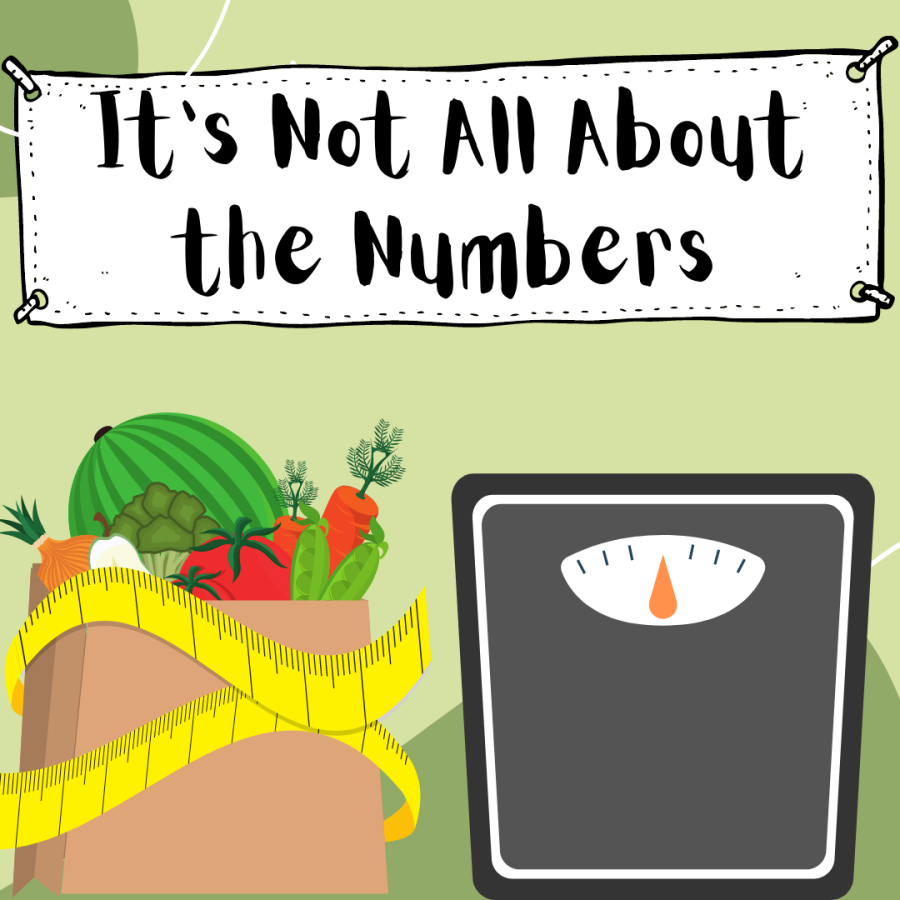The obstructive cycle of diet culture
Dieting isn’t about counting numbers but developing a healthy lifestyle.
Have you ever felt guilty or anxious about a diet or when around certain foods? If the answer is yes, then there is a good chance you’ve experienced disordered eating. Americans suffer from eating disorders when images of body standards are constantly being showcased on multiple social media platforms. When can we say goodbye to negative eating habits and accept diverse body types?
Our phones are overflowing with toxic body standards that society expects us to achieve. “Too skinny” or “too fat” are words we say to ourselves too regularly, in turn, increasing the percentage of people with eating disorders and mental health issues. Social media only adds to the problem many teens and adults face: body dysmorphia or the obsessive focus on a perceived flaw in appearance.
The constant scrolling of photoshopped images on social media is ruining our perception of our own bodies. Why does my stomach roll when I sit or is the texture on my legs normal? Normalizing insecurities is an important part of making sure boys and girls are confident in their own skin.
Diet culture goes back to moderation and balance created by the Greeks and was used to cut back body fat. Fat was seen as less beautiful and is still viewed this way in modern times. Weight and fat percentage isn’t just a number, but rather something teenagers continuously yearn to lessen.
Referring to foods as “good” or “bad” is a sign that you’re falling into the depths of disordered eating. Disordered eating consists of having a severe focus on calories and/or weight while only caring about the physical aspect of starting a diet. Diets should be used to help maintain a healthy, energized lifestyle and not for trying to meet unrealistic body standards.
Orthorexia is a term used when you have an unhealthy relationship with food and obsess over it so deeply that it affects your well-being. According to MDPI, 27% of youth and young adults have orthorexia and this can severely affect anybody’s daily life. The obsession over food is ruining many lives and needs to be prevented.
All bodies have certain needs which are not being met when restrictive diets are followed. These diets are learned from social media and extreme makeovers, specifically from celebrities, and they are becoming idolized. Everybody has seen the dramatic weight changes from Rebel Wilson or Adele and going from 300 to 120 pounds is becoming an inspiration to most young adults.
Some content creators are setting realistic eating habits like Linda Sun, Bria Lemirand and many others. Popular influencers setting good examples for teens will make a substantial difference in how their viewers look at themselves and food. Them posting a video eating a sandwich or a slice of pizza is giving young adults the encouragement to continue in their recovery.
Linda Sun uploads youtube videos weekly on her daily life filming her healthy, balanced eating and exercise routines. She emphasizes the fact that balance is key when trying to become healthier and one should let themself eat as much as they want as long as they are hungry. Hunger should be solved by eating nutritious foods and even an occasional dessert. “Junk food” shouldn’t be considered bad, but something that everyone can have in portions.
Bria Lemirand is known for her avocado toast and Trader Joe’s hauls, but she just recently opened up about her weight gain following her eating disorder. More people continue to share their stories with food on platforms like TikTok, Instagram and YouTube which give viewers the security they need to continue eating.
If you feel like you’re experiencing the symptoms of disordered eating or Orthorexia help is always available. Check out these websites to get more information about maintaining a healthy, balanced lifestyle.






Maddie Policastro • May 26, 2022 at 7:24 am
Beautifully written as always! You did such an amazing job covering such a serious topic.